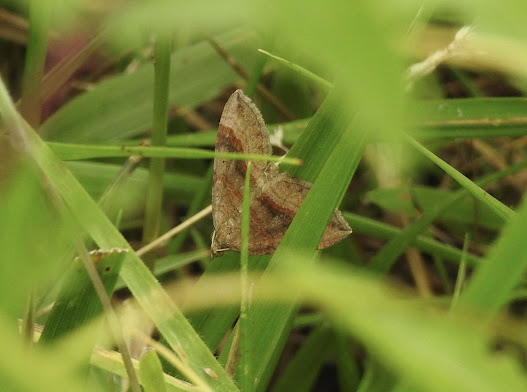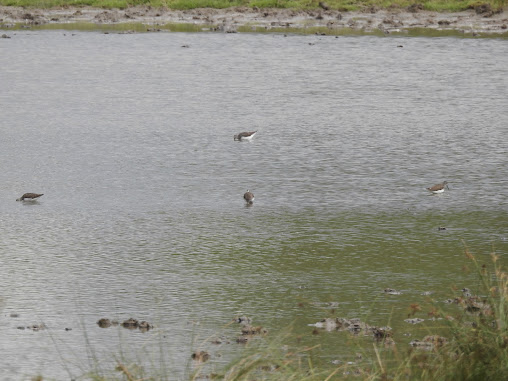I'm back in the field. My recent absence has been caused by a bout of Covid 19. Yes the lurgy finally caught up with me, and indeed Lyn. From my point of view it been more tedious than alarming, but it has had the unfortunate effect of causing a further postponement of Lyn's much needed op.
I'm actually still testing positive but reasoned there wasn't much chance of passing it on to anyone at Morton Bagot as long as I gave Dave prior warning. My solo visit had to be a relatively brief one, and was concentrated on the flash field.
The nearest flash is still in good nick, although there is now more water than mud.
The only waders visible were eight Green Sandpipers and 37 Lapwings. I couldn't help wondering whether I've missed anything during my absence, the only news I'd heard being the presence of a Little Ringed Plover last Saturday (John Chidwick). This was actually the only record this year so far.
Other birds seen today included seven recently fledged Mistle Thrushes, two calling Little Egrets, two Red Kites, and a tacking Lesser Whitethroat. Pretty standard fare, but I was just glad to be out.
It was a rather cloudy morning so butterflies were reluctant to fly. Among the usual Meadow Browns and Ringlets I kicked up a Small Heath and several Small Skippers (my first this year), and also a Shaded Broad-bar moth.
 |
| Shaded Broad-bar |
Hopefully I'll test negative later this week and normality will return.
.jpeg) |
| Spotted Knot-horn Phycitodes binaevella |
Knot-horns are strange looking moths. Their natural resting position is bolt upright. The moth is resting on a bracket holding the light in position, its eye and palps are at the top and the end of its folded wings at the bottom.

No comments:
Post a Comment